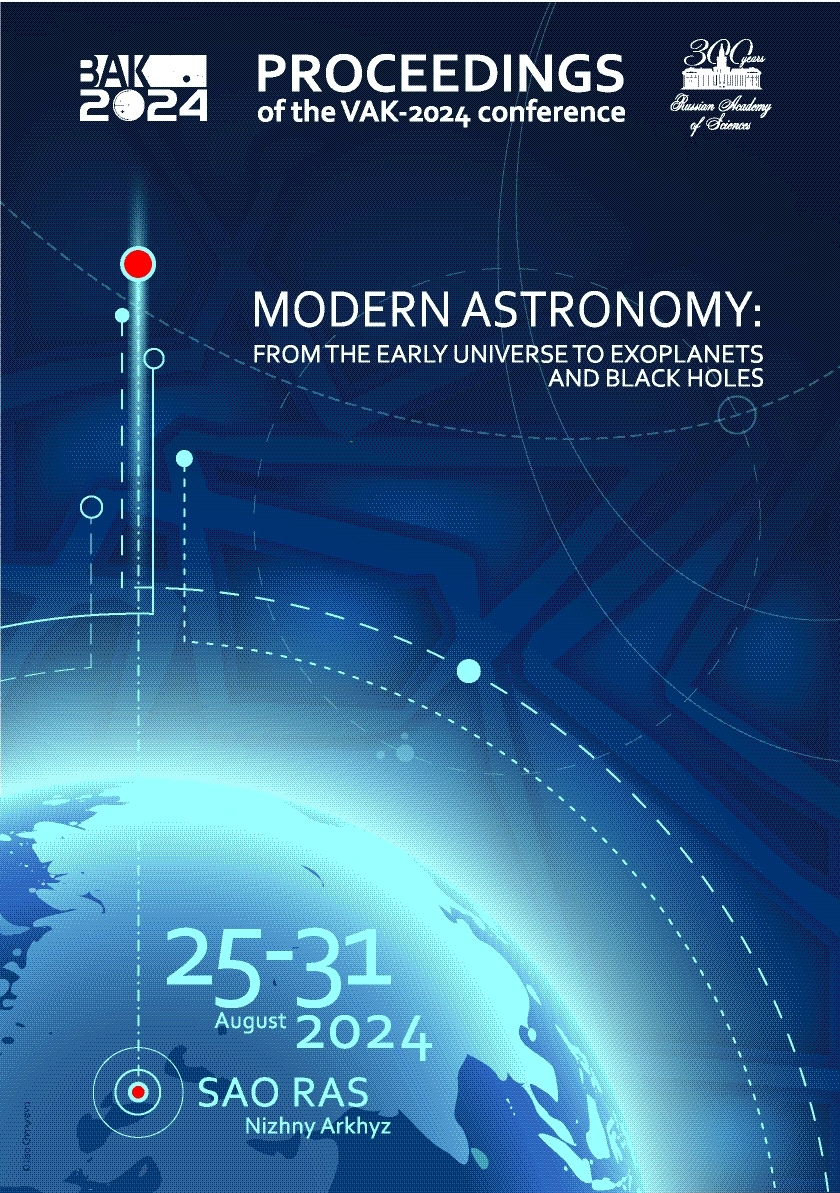UDC 53
UDC 520
UDC 521
UDC 523
UDC 524
UDC 52-1
UDC 52-6
CSCSTI 41.00
CSCSTI 29.35
CSCSTI 29.31
CSCSTI 29.33
CSCSTI 29.27
CSCSTI 29.05
Russian Classification of Professions by Education 03.06.01
Russian Classification of Professions by Education 03.05.01
Russian Classification of Professions by Education 03.04.03
Russian Library and Bibliographic Classification 2
Russian Library and Bibliographic Classification 223
Russian Trade and Bibliographic Classification 614
Russian Trade and Bibliographic Classification 6135
BISAC SCI004000 Astronomy
BISAC SCI005000 Physics / Astrophysics
A statistically correct method for optimizing the parameters of the kinematic model for a homogeneous set of Galactic objects has been developed and implemented, which includes minimizing the squares of relative deviations from the observed radial velocity, proper motions, and distant characteristic. The latter refers to the trigonometric parallax (in the case of absolute distances) or the distance modulus (in the case of relative, i.e., photometric, distances). The solution lies in the technique of the principle of maximum likelihood. The presence of measurement errors and natural (dynamic, astrophysical) velocity dispersion is taken into account; the parameters of the latter (velocity ellipsoid) are estimated. The final iterative algorithm includes optimization of the smoothness of the rotation law and a flexible procedure for eliminating outliers in the data, generalized to a four-dimensional field of residuals. The method, without requiring restrictions on the magnitude of random errors in the distant characteristic, directly takes into account the non-Gaussian distribution of errors in heliocentric distances, thereby correcting the corresponding systematic shifts in the parameters of the model and the average rotation curve of the subsystem under consideration. The inclusion of distance uncertainties in the probabilistic model strongly affects the estimates of natural velocity variances (reduces them), and also generally reduces the variances of model parameters. Applying the method to HMSFR maser sources with trigonometric parallaxes gives the following parameter estimates: distance to the center of the Galaxy $R_0 = 7.88 \pm 0.12$ kpc, angular velocity of rotation of the maser subsystem on the solar circle $\omega_0 = 28.43 \pm 0.22$~$\rm km\,s^{-1}\,kpc^{-1}$, corresponding linear velocity $\theta_0 = 224 \pm 4$~$\rm km\,s^{-1}$, the angular velocity of the Sun's rotation around the center of the Galaxy $\omega_\odot = 30.40 \pm 0.20$~$\rm km\,s^{-1}\,kpc^{-1}$.
methods: data analysis; Galaxy: fundamental parameters, kinematics and dynamics
1. Aghajani T. and Lindegren L. 2013, Astron. Astrophys., 551, id. A9
2. Bian S., Xu Y., and Li J., 2022, Astron. J., 163, id. 54
3. Ding P., Zhu Z., and Liu J., 2019, Research in Astron. Astrophys., 19, id. 68
4. Gaia Collaboration , Vallenari A., Brown A., et al., 2023, Astron. Astrophys., 674, id. A1
5. Hyland L., Reid M., Orosz G., et al., 2023, Astrophys. J., 953, id. 21
6. Hyland L., Ellingsen S., Reid M., et al., 2024, Proceedings IAU Symposium, 380, p. 106
7. Mai X., Zhang B., Reid M., et al., 2023, Astrophys. J., 949, id. 10
8. Nikiforov I., 1999a, Astrophysics, 42, p. 300
9. Nikiforov I., 1999b, Astron. Rep., 43, p. 345
10. Nikiforov I., 2012, Astron. Astrophys. Trans., 27, p. 537
11. Nikiforov I. and Veselova A., 2018, Astron. Lett., 44, p. 699
12. Pont F., Mayor M., Burki G. 1994, Astron. Astrophys., 285, p. 415
13. Rastorguev A., Utkin N., Zabolotskikh M., et al., 2017, Astrophys. Bull., 72, p. 122
14. Reid M., Menten K., Brunthaler A., et al., 2014, Astrophys. J., 783, id. 130
15. Reid M., Menten K., Brunthaler A., et al., 2019, Astrophys. J., 885, id. 131
16. Reid M., Menten K., Zheng X., et al., 2009, Astrophys. J., 700, p. 137
17. Sakai D., Oyama T., Nagayama T., et al., 2021, J. Phys. Conf. Ser., 2145, id. 012011
18. VERA Collaboration , Hirota T., Nagayama T., Honma M., et al., 2020, Publ. Astron. Soc. Japan, 72, id. 50
19. Xu Y., Bian S., Reid M., et al., 2021, Astrophys. J. Suppl. Ser., 253, id. 1






